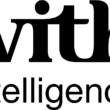For the global journalism community, one of the most pleasing signs the pandemic is – for now at least – easing is this month’s return of the International Journalism Festival, in Perugia.
After a two-year enforced hiatus, 2022’s event returned with the usual combination of panels and talks featuring some of the cleverest minds in media, covering everything from tackling reporting trauma to strategies for running journalistic organizations. It’s the latter area I’ll be focusing on here, with three takeaways from the event if you couldn’t make it. (And if you have never been, I couldn’t recommend it more.)
1.We need better ways of learning
Surviving in an industry changing as fast as the media, and in recent years particularly, facing a set of new challenges to the way we work, involves constantly adapting and adjusting to new ideas.
But, in many ways, our processes for learning are still struggling to catch up. The old model, according to Francois Nel, associate professor of Media Innovation and Entrepreneurship at the UK’s University of Central Lancashire, was for the most part based around learning from those above you, something that worked pretty well in more stable times.
But when faced with the kind of disruption taking place across the industry, and the generally chaotic world of the pandemic and everything else, that process is neither necessarily effective, nor sufficient to gain the skills and insight to deal with challenges leaders in the media are facing.
The two new key approaches involve, according to Nel, learning from those below you in seniority, and those outside not only your organization, but also your industry. And that “has to be not only done differently, but has to be done deliberately”.
Now none of this is particularly revolutionary. And nicking ideas and lessons from other industries has been an ongoing theme in media for at least a decade (sometimes with mixed results). But the fact it’s still a talking point reflects that it’s not necessarily embedded across the industry, and importantly often lacks that deliberate approach Nel is talking about.
And, of course, one of the key reasons it’s so necessary is the way people rise up the ranks within journalist organizations and the media more generally.
As Anita Zielina, Director of Strategic Initiatives at CUNY’s Newmark J-School, put it: “Media has a not-so-great tradition of automatically lifting people into leadership roles that might not have even an interest in learning. The best journalist becomes the boss.“
That point is something that really rings true for me, and I think it’s not just true of the journalistic side. So many executives in media, as in some other industries, come up through specific paths, be it sales, marketing, finance or product. The need to ensure those people have both basic management skills and a desire to learn from outside their specialisms, is just as key as it is for hot shot journalists and editors promoted up the ranks in media.
Renee Kaplan, the Financial Times’ head of digital editorial development, is always worth listening to on how to marry journalistic work to business goals.
2. Retention is tough
On one of her panels in Perugia, she described the challenges that have come with the huge spikes in traffic, and in many cases paying subscribers, caused by the rolling crises stretching all the way back to 2016 and the “Trump Bump”. What might be seen as a positive boon actually puts the emphasis on retention and, in turn, presents a load of very tricky problems for news businesses.
“It’s difficult because retention is hard, period,” said Kaplan. “It’s sort of little known, unless you are involved in revenue that it is more expensive and harder to retain than it is to acquire. Acquiring is easy, retaining involves such a complex notion of engagement, value, delivering an experience people are interested in.”
“So that retention piece is actually one of the biggest challenges we are facing. And, at the Financial Times, it is actually affecting the diversification of our business model because we know that is going to be a big challenge.”
Addressing that challenge requires getting everyone across the business to pull in the same direction, said Kaplan.
“If there is one single most important strategy to be able to succeed in a business model it’s alignment and alignment is really complicated. It’s a little bit more complicated when you’re bigger probably… getting a shared understanding across a business, but also within departments, of what is a business’s single most important goal. It’s difficult often just to find the single most important goal. There needs to absolutely be alignment around what we want to do.”
It is, in the end, she said, more about “shared narrative even more than a shared business goal.”
Kaplan’s comments address a fundamental aspect of running a news business. A business strategy, in this case a subscription model, is far from independent of the news cycle that drives demand for your product. But that in turn creates changing goals that have to be addressed with business and product approaches. Getting a whole organization to align around those changing priorities is one of the biggest challenges for any news media business.
3. Share responsibility for innovation
Another person always worth listening to is Chris Moran, The Guardian’s head of editorial innovation. Moran was co-creator of the newspaper’s ground-breaking analytics system Ophan, which remains an industry-leading internal product that gives the paper an advantage over its competitors. Moran’s role has expanded in recent years to take on much of the newspaper’s attempts to build new products and deliver new ways of working, particularly when it comes to ensuring product and editorial teams work in (relative) harmony.
In a panel on how to decide how to do (or not do) new things in newsrooms, he talked about The Guardian’s approach to innovation.
“With editorial, I want us to adopt some of the rigor of product, think really carefully about what we’re asking for, but take responsibility for some of that strategy. And on the product side I want them to bend towards us a little bit as well,” he said. “But there are gaps, natural gaps, for good reason between the way in which editorial and product work, and trying to massage those two things is what I am trying and often failing to do.”
Moran said that The Guardian now probably wouldn’t have built Ophan or its own in-house CMS Composer. But having the flexibility of an in-house analytics system had delivered real advantages.
“It’s a culture change tool that happens to be a real-time data tool. The data we’re pushing into the newsroom is designed to promote positive action and change people’s minds.
“But you can’t build everything, you shouldn’t build everything. You should know when someone else can do it better than you and be humble to it.”
There are also, he added, always pitfalls to relying too much on what you can measure.
“It’s often the case, especially when you are working on an editorial product, that people go, it’s an editorial thing, so let’s measure engagement of readers and it looks like common sense at the top, but it often isn’t.”
“Sometimes common sense is enough. Let’s not argue a good idea into the ground because we can’t pin a number on it.”
As with Kaplan’s focus on alignment, that comes through from Moran’s comments is that getting different pillars of an organisation to work together towards the same set of goals is a huge challenge, but integral to success, whether it’s building new products or retaining subscribers. It’s one that in some ways is unique to the news media, and arguably the biggest challenge anyone in a leadership role in news faces today.




